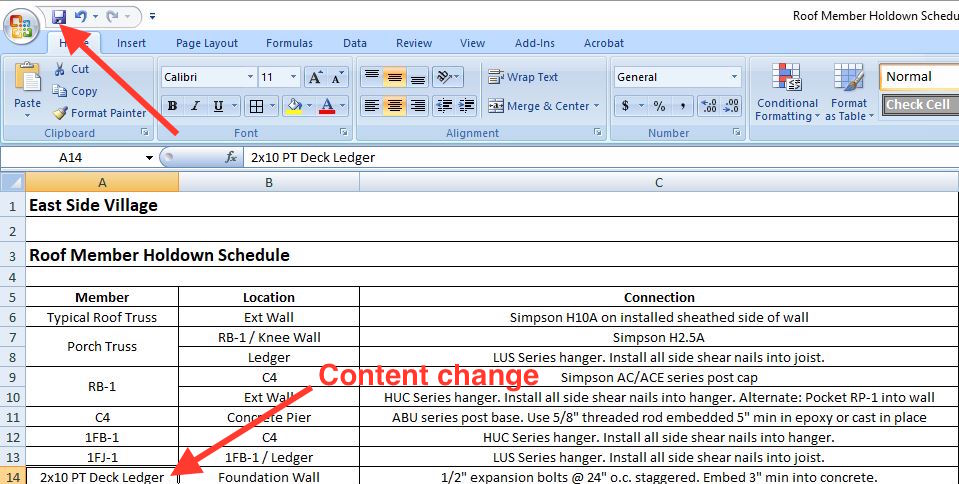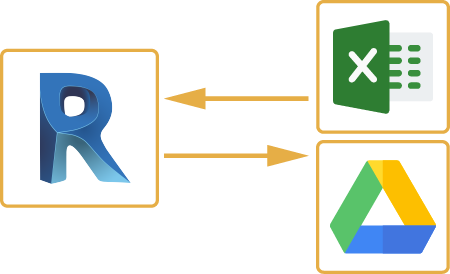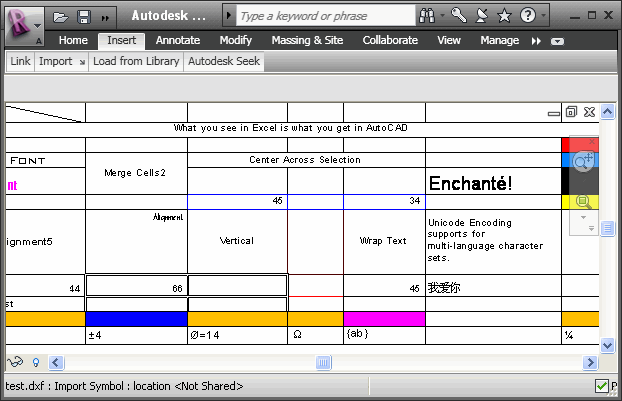Excel Empowerment: Supercharge Your Revit Projects With Seamless Data Import
Are you aiming to supercharge your Revit projects? With seamless information import, Excel empowerment can be the secret to unlocking your task's full possibility. Think of streamlining the import procedure and maximizing effectiveness via smooth information integration. In this post, we will certainly share pointers and techniques for utilizing Master your Revit tasks. Discover just how utilizing the Excel-Revit link can bring about success in your tasks. Prepare to take your Revit projects to the following level with Excel empowerment.
The Power of Master Revit Projects
You can supercharge your Revit jobs by using the power of Excel for smooth information import. Excel is a flexible tool that can significantly boost your process and productivity in Revit (import excel into revit). With Excel, you can conveniently import and take care of huge amounts of information, conserving you time and initiative
One of the key benefits of making use of Excel in Revit is its ability to handle complicated computations and solutions. You can make use of Excel to carry out computations on your data, such as creating quantities, computing expenses, or examining performance. When functioning with big jobs that need extensive calculations., this can be particularly helpful.

In enhancement, Excel supplies a straightforward and familiar interface for dealing with data. You can organize and control your data in a spreadsheet format, making it easy to see and modify. This can be particularly practical when collaborating with others or when you need to make quick changes to your task data.
Moreover, Excel allows you to conveniently import and export data in between Revit and various other software applications. You can import information from external resources into Revit, such as material specs or devices routines, and export information from Revit to Excel for more analysis or reporting.
Streamlining Information Import With Excel in Revit
Simplifying information import in Revit becomes simpler when utilizing Excel as a device. With Excel, you have the power to seamlessly import and handle big amounts of data in your Revit jobs. By using the acquainted interface and performance of Excel, you can conserve time and boost effectiveness in your process.
One of the vital benefits of utilizing Excel for data import in Revit is the ability to conveniently arrange and control data prior to importing it right into your task. With Excel's effective features, such as arranging, filtering system, and formulas, you can quickly tidy up and style your data to fulfill the needs of your Revit job.
Furthermore, Excel permits you to import data from various resources, such as databases, spread sheets, or also web-based applications. This adaptability provides you the freedom to collect data from various platforms and settle it into one main place for very easy gain access to and management.
On top of that, Excel supplies the option to produce custom layouts for data import in Revit. By developing design templates customized to your project's details requirements, you can make certain consistency and precision in your data import process.
Total, using Excel as a device for information import in Revit improves the procedure and enhances your efficiency. So why not make use of this powerful device and supercharge your Revit projects with seamless information import making use of Excel?
Optimizing Effectiveness With Seamless Data Integration
Take full advantage of effectiveness by seamlessly incorporating and handling data in your process. Gone are the days of manually inputting information right into your system, squandering precious time and resources. With smooth information combination, you can streamline your procedures and supercharge your efficiency.

Managing data comes to be a wind when you have a seamless combination system in position. You can quickly arrange and categorize your information, making it check this easier to recover and evaluate. Say goodbye to the days of exploring endless spread sheets for that item of details you need.

Excel Advice for Revit Projects
With these tricks and ideas, you'll have redirected here the ability to efficiently manage your Revit tasks making use of Excel. One of the initial things you can do is to make use of Excel's powerful sorting and filtering system functions. This will enable you to swiftly arrange and examine your task information. You can arrange elements by their names or filter them based on certain criteria, such as their status or area. Another beneficial attribute is the capability to develop formulas in Excel. You can utilize formulas to determine quantities, do complicated estimations, and also automate specific tasks. This can save you a lot of time and initiative in your Revit jobs. Furthermore, you can use Excel to create customized layouts for information import and export. This means, special info you can make sure consistency and accuracy when transferring information in between Revit and Excel. Do not forget regarding Excel's conditional formatting feature. You can utilize this to highlight particular components or values based upon details conditions. This can assist you promptly determine and deal with any problems or anomalies in your task information. Generally, understanding these Excel tricks and ideas will significantly boost your ability to take care of and manipulate data in your Revit tasks.
Harnessing the Excel-Revit Connection for Success
To take advantage of your Excel-Revit connection, take advantage of the capacity to easily move and synchronize job info. By utilizing this effective connection, you can supercharge your Revit projects and streamline your process. With simply a couple of simple actions, you can import data from Excel straight right into Revit, saving you time and making sure accuracy.
One of the key benefits of the Excel-Revit connection is the ability to transfer information perfectly. Whether you are importing timetables, area data, or even geometry info, Excel provides an user-friendly user interface that allows you to organize and manipulate your information before importing it right into Revit. This implies you can quickly update and change your task info in Excel, and with a few clicks, move those adjustments directly right into your Revit version.
In enhancement to moving data, the Excel-Revit link likewise enables for synchronization. This suggests that any adjustments made in Excel can be immediately upgraded in Revit, making certain that your project info is always up to date. This synchronization function is especially valuable when taking care of big and complicated tasks, as it gets rid of the requirement for manual data access and reduces the threat of mistakes.
Verdict
By improving data import and maximizing performance via smooth data combination, you can supercharge your jobs and accomplish success. Do not wait any kind of longer, begin using the power of Excel in your Revit projects today and unlock a world of possibilities.
You can supercharge your Revit projects by taking advantage of the power of Excel for seamless data import. With Excel, you have the power to perfectly import and manage large quantities of information in your Revit jobs (revit tool). Generally, understanding these Excel tricks and suggestions will considerably boost your capability to handle and manipulate information in your Revit projects
Whether you are importing timetables, space data, or also geometry details, Excel offers an user-friendly interface that allows you to arrange and manipulate your information before importing it right into Revit. By enhancing data import and making the most of effectiveness with smooth information combination, you can supercharge your tasks and accomplish success.